Have you heard of Arnhem Land? Could you find it on a map? It’s pretty remote, we know. What about East Arnhem Land? Remoter still. But the truth is, East Arnhem Land and the Gulf Country are little-known secret treasures of the Territory. We know it’s not easy to get there. But it’s worth the effort, trust us.
Once you arrive in East Arnhem Land you’ll find extraordinary Aboriginal art , culture and pristine beaches. The fishing, camping and 4WD tracks are like nowhere else. But you’ll also findhistory and art aplenty.
Here’s your guide to 6 of the best Aboriginal experiences in East Arnhem Land.
Escape to an island at Banubanu Beach Retreat
Just one hour’s boat ride from Gove Harbour, Bremer Island (Dhambaliya) is an idyllic barefoot sand-between-your-toes island getaway. Whether you’re planning a relaxing day trip or an overnight getaway, Banubanu Beach Retreat is one of the Territory’s best kept secrets.
Developed by owners Helen Martin, an Arrernte woman, and Trevor Hosie in consultation with the Yolŋu people, off-grid Banubanu blends in naturally with this pristine island. Walk the trails or sweeping beaches where the only footprints are likely to be your own.
Once a simple fishing camp, Banubanu has evolved into an eco-sensitive glamping-style retreat straddling the northern peninsula. Wakeup to panoramic ocean views or chill out on your private deck beneath shady sheoak trees. Or check into the Penthouse tent atop a sand dune with sweeping sea views.
At the heart of Banubanu is the restaurant overlooking Western Cove. Cool down in the plunge pool, linger over lunch for sun-drenched afternoons or take in the sunset, cocktail in hand. Dive into history at Old Banubanu and poke around a quirky collection of photographs, driftwood and shells.
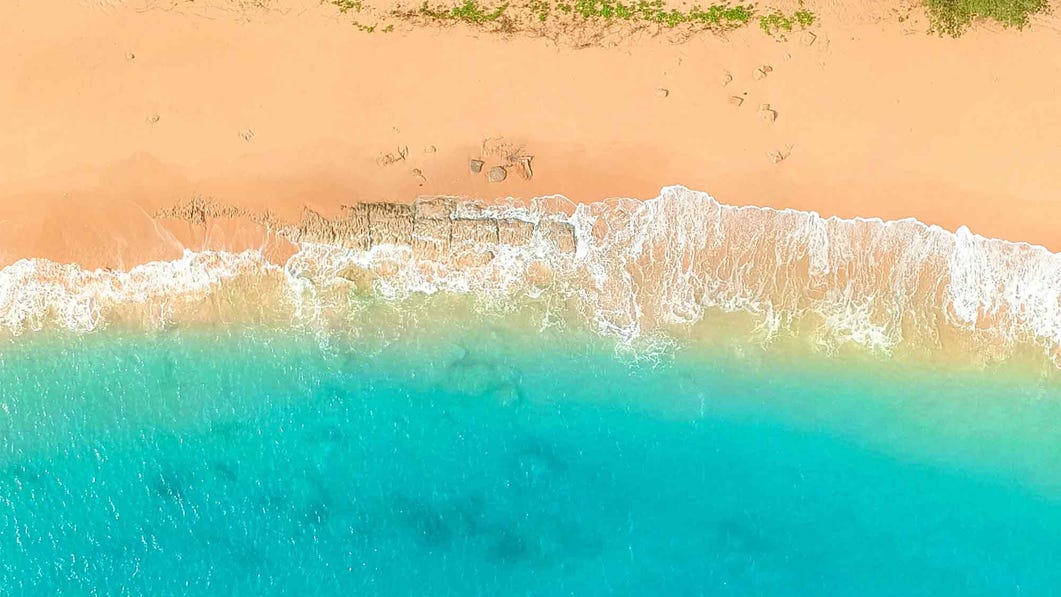
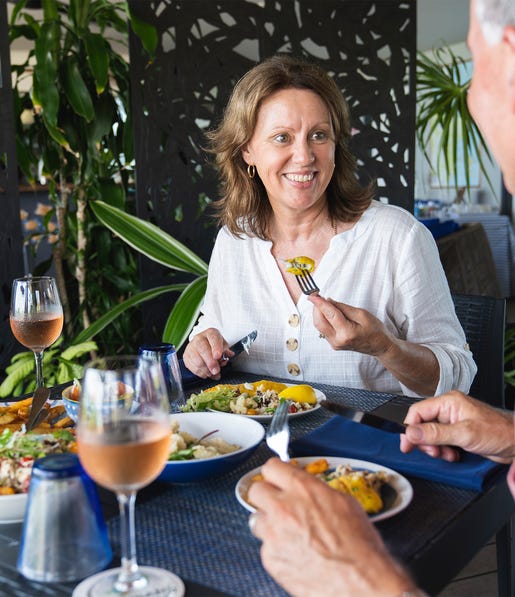
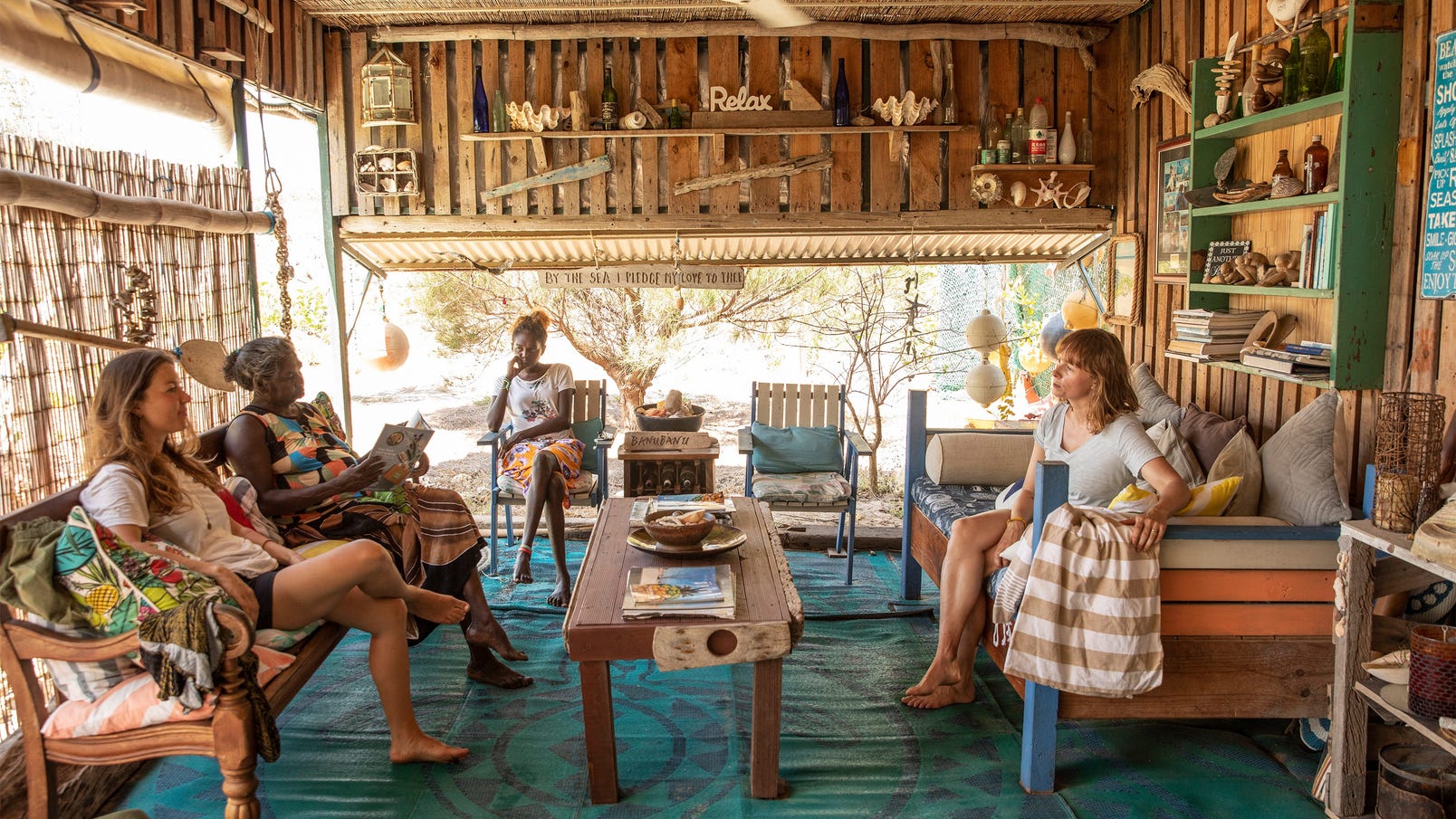
Get back to nature at Dhimurru Recreational Areas
Beyond the town of Nhulunbuy, the Gove Peninsula has endless sightseeing and camping hot spots. Visit one of the many sites of Dhimurru Recreation Area on a day trip from Nhulunbuy or camp overnight in a natural bush camp. If you’re into fishing, boating, camping, 4WD adventures, secluded beaches and little-visited islands, you’ll find endless reasons to visit.
Camp beside waterholes and mini gorges at Guwatjurumurru (Giddy River) or enjoy the unspoilt beauty of Barinura (Little Bondi Beach) with its peaceful beaches and coastal monsoon forests. For easy access to the water, head to Binydjarrna (Daliwuy Bay), where campsites overlook the bay next to a boat ramp. If you’re after something more remote, the upper catchment area of Ganami offers an exclusive campsite near freshwater rockpools. Or you could pitch your tent at Mananaymi (Scout Camp), where you’ll fall asleep to waterfall sounds and wake up to freshwater pools surrounded by woodlands.
The name Nhulunbuy holds cultural significance, combining "Nhulun" (the traditional name for Mt Saunders) and "buy" (meaning nearby). The Yolŋu people of Eastern Arnhem Land belong to one of two moieties—Dhuwa and Yirritja—which connect them to Wangarr Time (aka the anglicised word of Dreaming or Dreamtime). These deep connections to country make your journey to Gove Peninsula a special one that is rich in history and Aboriginal culture.
Get to Nhulunbuy by air from Darwin, or by road (4WD only) on the Arnhem Way through Arnhem Land from Katherine and the Stuart Highway. A visitor permit is required through Dhimurru Aboriginal Corporation.
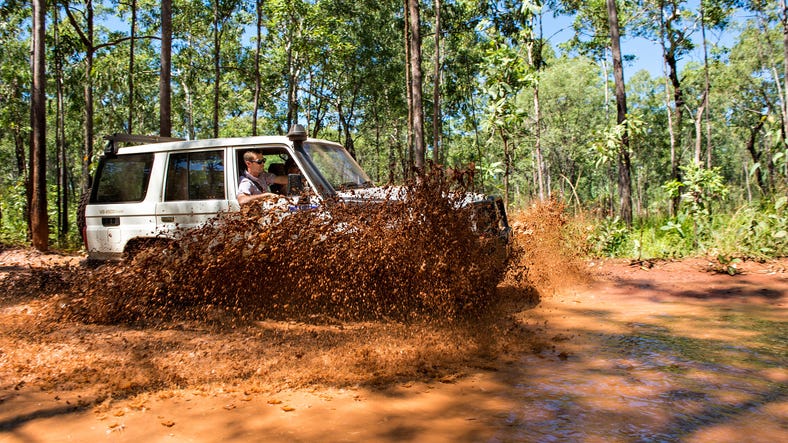
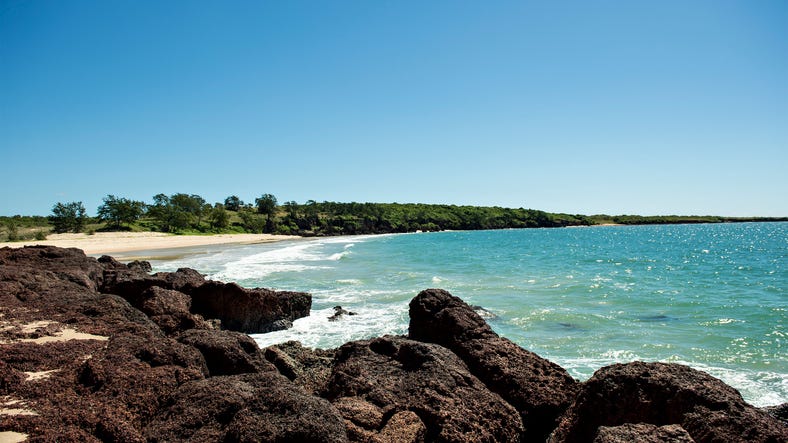
View the stone pictures of Garanhan (Macassan Beach)
Wurrwurrwuy stone pictures is an historical site linking ancient trading connections between Yolŋu traditional custodians and Macassan traders. The stone pictures provide a glimpse into the 19th century, when Macassan seafarers sailed to Arnhem Land to harvest sea cucumbers (trepang). Riding the monsoon winds from Sulawesi (now Indonesia), they journeyed to Arnhem Land and returned home with their boats full of much sought-after trepang.
In return for access to Yolŋu sea country, the Macassans traded items like knives, axes, fish hooks, cloth, tobacco, and rice – all highly valuable commodities. Today, you can explore this history on a walking trail linking four clusters of stone pictures, with interpretive signsat the southern end of Macassan Beach (4WD access only).
Macassan influence is still present in Yolŋu culture today, seen in their art, language, and stories. You can even spot former Macassan camps marked by Tamarind trees, which grew from fruit the traders brought to ward off scurvy.

Discover East Arnhem Land art and cultural history
Yolŋu artists from East Arnhem Land are some of the most celebrated in Australia. They are known for sharing their rich cultural heritage through striking works of art. And there’s no better place to experience their exceptional artistry than at Buku-Larrŋgay Mulka Centre, located just a ten-minute drive from Gove-East Arnhem Airport.
Buku-Larrŋgay Mulka means "the feeling on your face as it's struck by the first rays of the sun"—a fitting name for an art centre which radiates creativity. The centre supports artists from more than 20 homelands across East Arnhem Land, showcasing stunning bark paintings, memorial poles, wood carvings, and yidaki (didjeridu). These artists are renowned among global collectors for exceptional craftsmanship.
Visitors are welcome to explore the galleries and museum collections, including the Yirrkala Church Panels, where two towering, four-metre masterpieces are considered among Australia’s most significant artworks.
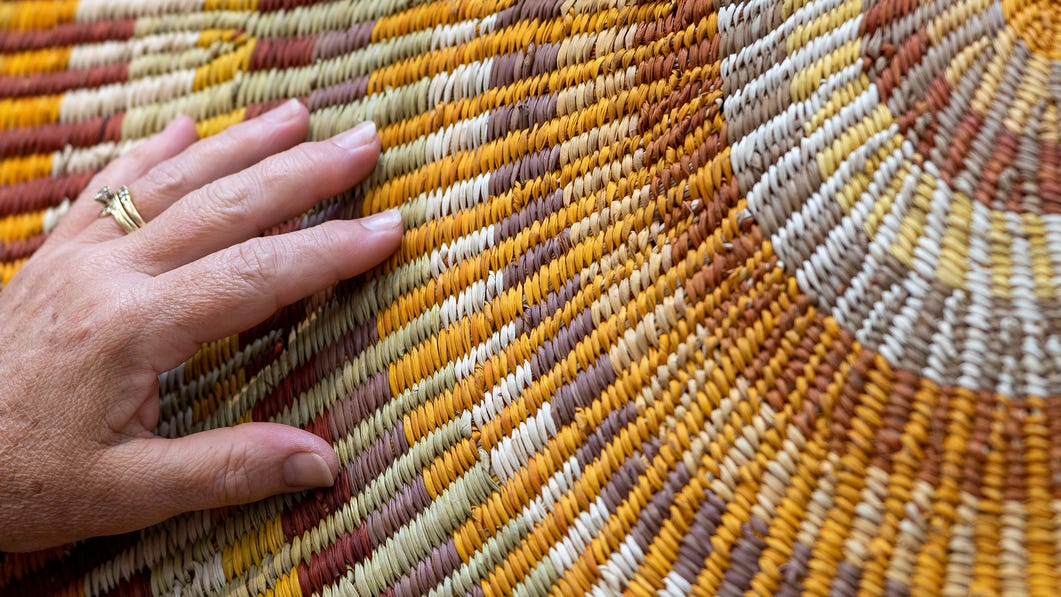
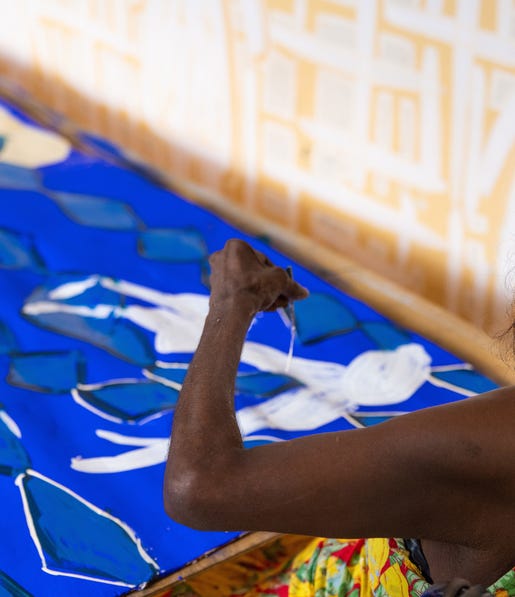

Take a remote road trip through Gulf Country
Far out east, the Gulf Country town of Borroloola is a little-visited region of the Territory that’s well worth the journey. If you’re road-tripping on the Savannah Way, you’ll know what we mean. Golden landscapes stretch as far as the eye can see. Wildlife is abundant. And the nights—well, they’re as bright as can be as the Milky Way outshines any fireworks display. Don't miss a visit to Waralungku Arts to pick up a piece of local artwork.
At the heart of Gulf Country is Seven Emu Station, an Aboriginal-owned property run by fourth generation Shadforth family. Here, you’ll experience station life firsthand, gaining exclusive access to the wild beauty of the Gulf wilderness.
Spend your days spotting eagles and jabirus while keeping a lookout for turtles, dugongs, and crocodiles which lurk below the surface. At aptly named Shark Creek, you might even catch sight of a bull shark. Leave the swimmers behind – there’s no swimming in the sea here!
Fishing enthusiasts, you’ll be hard pressed to find a better place to wet a line. Try King Ash Bay on the McArthur River, Robinson River, the Pellew Islands and the Gulf of Carpentaria are home to prized species like barramundi, Mangrove Jack, and golden snapper just waiting to be hooked.
At the end of the day, bunker down at a rustic stockman’s campsite overlooking the Robinson River. With showers heated by open fires and shady trees buzzing with birdsong, Seven Emu Station is all about getting back to nature. The station is accessible by 4WD vehicle, and you'll need to cross a few riverbeds on the dirt road about 100 km west of Borroloola.
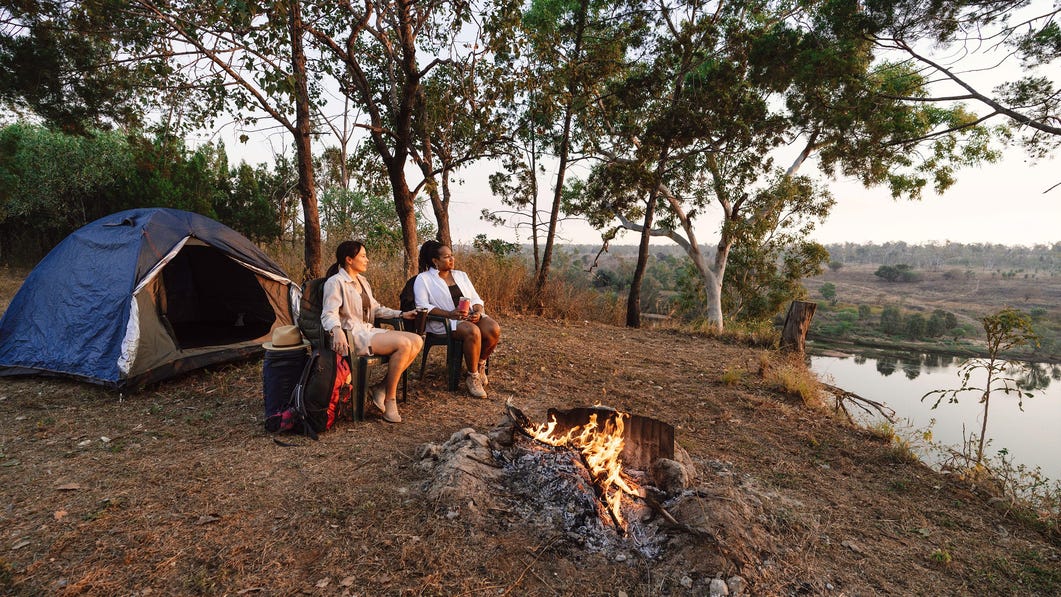
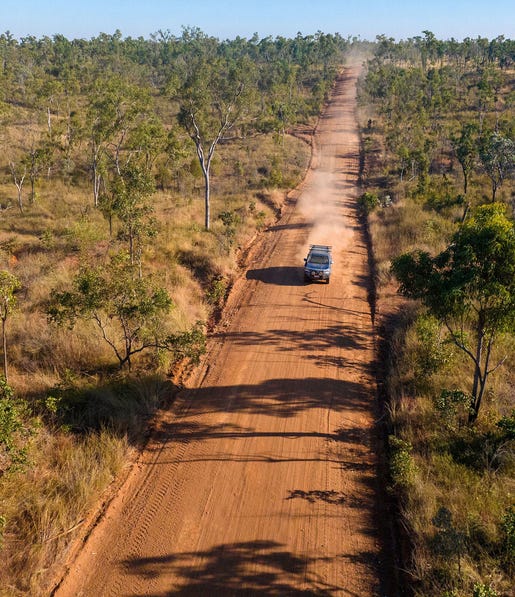
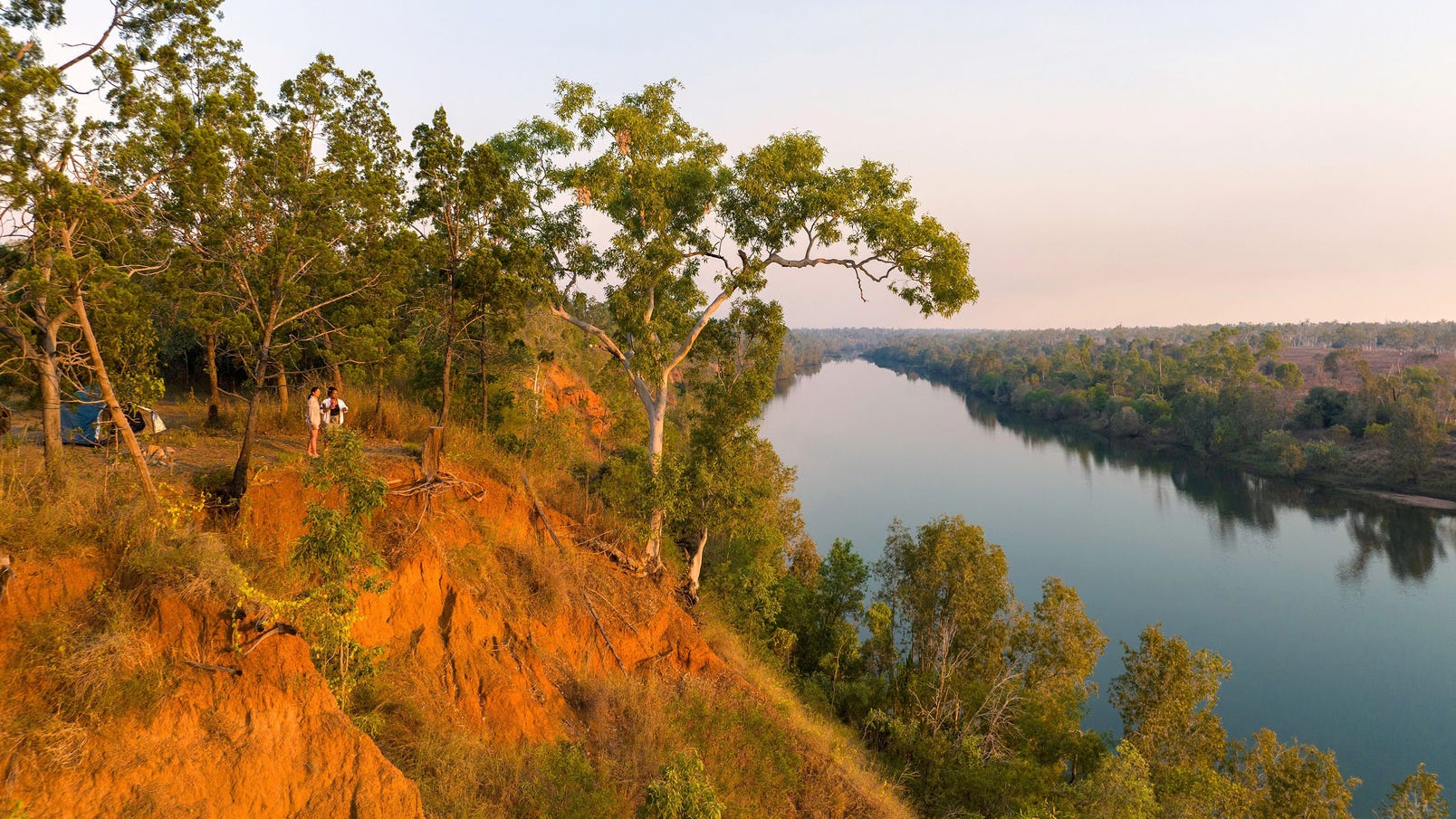
Stay on the beachfront at Bawaka Homeland
As you arrive at Bawaka Homeland the first thing you’ll notice is an aquamarine sea and white sandy beaches shaded by coconut palms. If not for the warm Welcome to Country ceremony by Yolŋu traditional owners, you might mistake this untouched tropical paradise for a South Pacific island. But this is the Territory, make no mistake.
100% off-grid and solar-powered by endless Territory sunshine, Bawaka offers the chance to immerse yourself in traditional homelands in a setting as relaxed as it is beautiful. Accessible only by 4WD vehicle, Bawaka is approx. one hour’s drive from Nhulunbuy.
Owned and operated by the Burarrwanga family, this small community welcomes visitors into their everyday lives. The beachside cabins are simple beach style, providing a comfortable retreat as part of Bawaka’s immersive cultural experiences. Depending on the season, you could find yourself weaving and dying pandanus leaves, crafting fishing spears from hardwood or walking with Aboriginal guides and learning about bush foods or traditional medicines. Then there’s the fishing, which is exceptional.
Come dusk, you’ll gather around the campfire with new-found friends beneath starry skies, sharing convivial conversations over dinner, perhaps learning about Yolnu people’s deep connections with the land. Or, perhaps you’ll brag about the day’s successful fishing expedition. However your days unfold, you’ll be creating lasting memories long after you’ve washed the beach sand from between your toes and left Bawaka in the rear-view mirror.
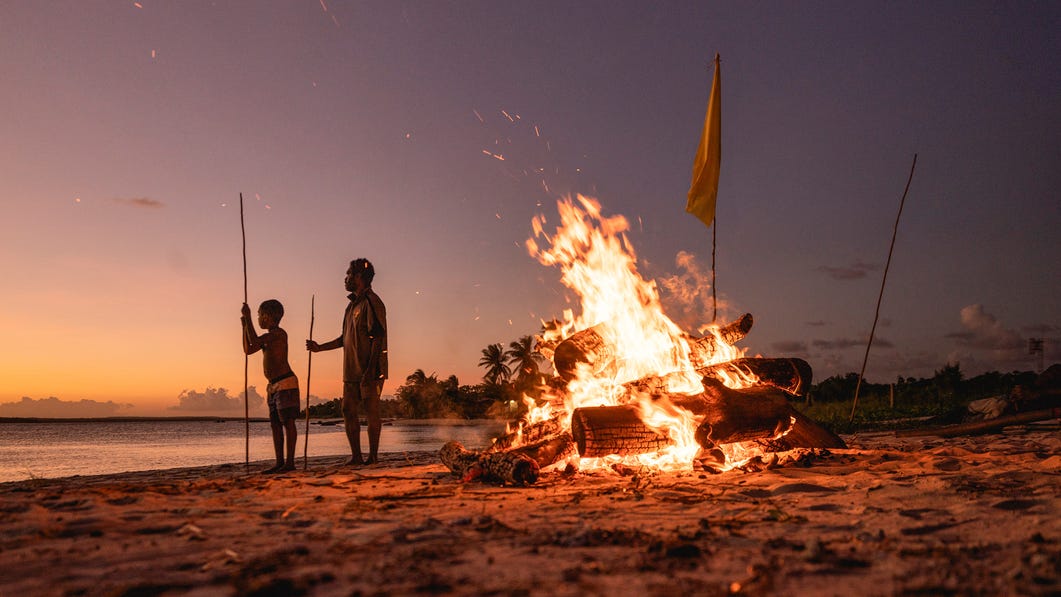
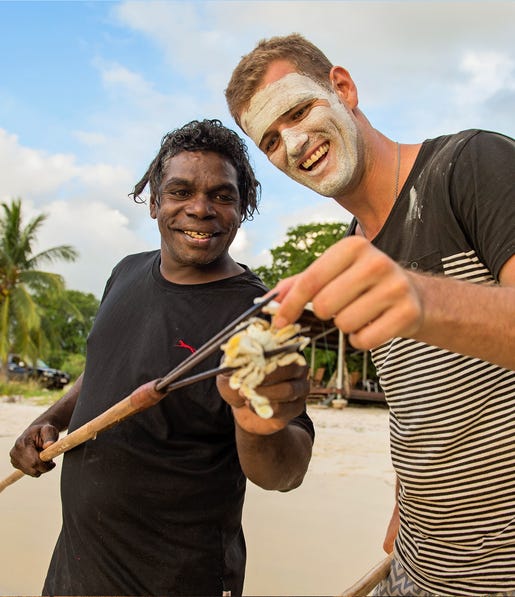

Don't forget your Visitor Permit
Don’t forget to apply for your visitor permits through Dhimurru Aboriginal Corporation if you’re visiting sites outside of Nhulunbuy or Northern Land Council if you’re driving the Central Arnhem Road from Katherine.
Keep exploring
More articles you might like





